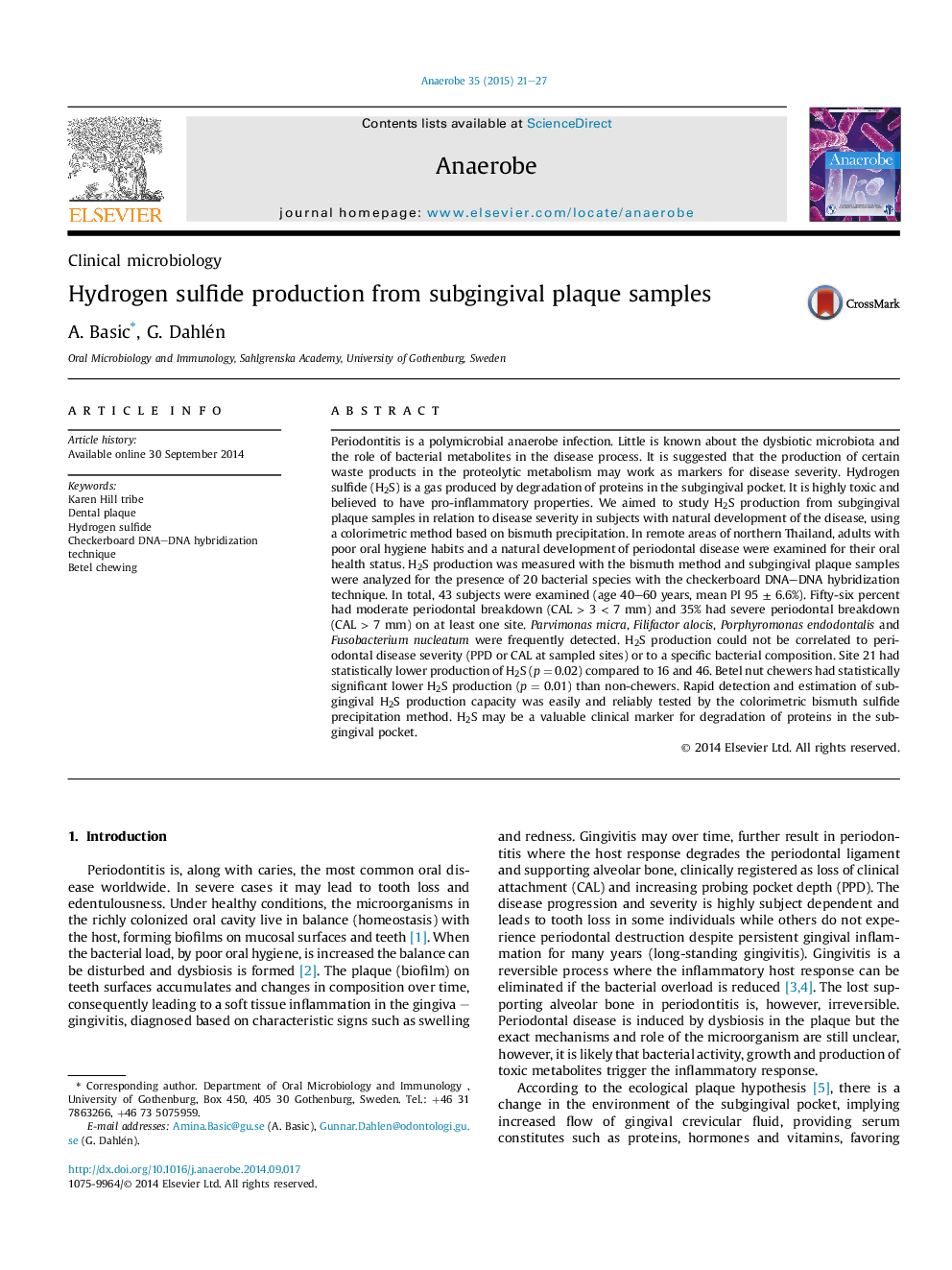| کد مقاله | کد نشریه | سال انتشار | مقاله انگلیسی | نسخه تمام متن |
|---|---|---|---|---|
| 3395081 | 1221667 | 2015 | 7 صفحه PDF | دانلود رایگان |
• The Karen population had poor oral hygiene, general gingivitis and little tooth loss.
• H2S was generally detected but did not correlate to periodontal disease severity.
• Upper front plaque produced less H2S than molar sites.
• The plaque was predominated by anaerobic species, some of which known H2S producers.
• Betel chewers showed lower production of H2S than non-chewers.
Periodontitis is a polymicrobial anaerobe infection. Little is known about the dysbiotic microbiota and the role of bacterial metabolites in the disease process. It is suggested that the production of certain waste products in the proteolytic metabolism may work as markers for disease severity. Hydrogen sulfide (H2S) is a gas produced by degradation of proteins in the subgingival pocket. It is highly toxic and believed to have pro-inflammatory properties. We aimed to study H2S production from subgingival plaque samples in relation to disease severity in subjects with natural development of the disease, using a colorimetric method based on bismuth precipitation. In remote areas of northern Thailand, adults with poor oral hygiene habits and a natural development of periodontal disease were examined for their oral health status. H2S production was measured with the bismuth method and subgingival plaque samples were analyzed for the presence of 20 bacterial species with the checkerboard DNA–DNA hybridization technique. In total, 43 subjects were examined (age 40–60 years, mean PI 95 ± 6.6%). Fifty-six percent had moderate periodontal breakdown (CAL > 3 < 7 mm) and 35% had severe periodontal breakdown (CAL > 7 mm) on at least one site. Parvimonas micra, Filifactor alocis, Porphyromonas endodontalis and Fusobacterium nucleatum were frequently detected. H2S production could not be correlated to periodontal disease severity (PPD or CAL at sampled sites) or to a specific bacterial composition. Site 21 had statistically lower production of H2S (p = 0.02) compared to 16 and 46. Betel nut chewers had statistically significant lower H2S production (p = 0.01) than non-chewers. Rapid detection and estimation of subgingival H2S production capacity was easily and reliably tested by the colorimetric bismuth sulfide precipitation method. H2S may be a valuable clinical marker for degradation of proteins in the subgingival pocket.
Journal: Anaerobe - Volume 35, Part A, October 2015, Pages 21–27
